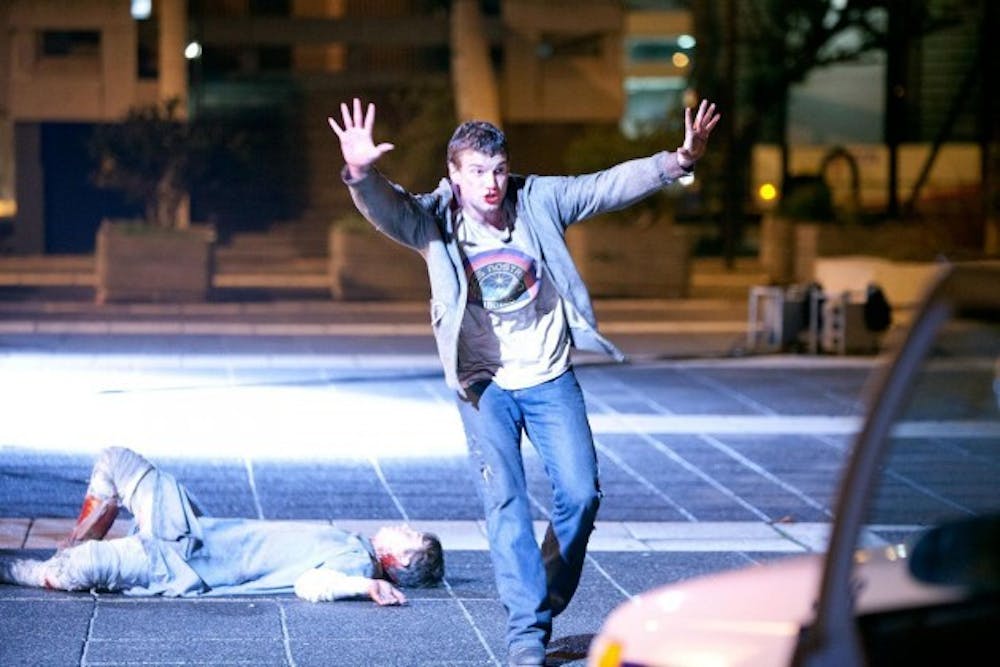Movie: Chronicle
Studio: 20th Century Fox
Release Date: Feb. 3
Grade: B+
How cool would it be to throw a bus with your mind? Found footage superhero flick Chronicle answers this and other vexing questions.
Found footage films aren't exactly anything new. The Blair Witch Project, Cloverfield, and theParanormal Activity series are just a few that have hit it big at the box office and, as a result, the first-person-shaky-cam style alone isn't enough to excite audiences anymore. That's why the latest film from director Josh Trank (The Kill Point) and writer Max Landis (The Death and Return of Superman) is such a success – it's something fresh. Well, at least fresher than almost anything else gracing cinemas in recent months.
The plot follows three high school teenagers who develop telekinetic powers after making a mysterious discovery in a hole in the ground. As the film progresses, the three teens' powers gradually grow stronger, all while learning new abilities like flying.
All goes well for the three for a bit, but it doesn't last. Eventually one of them is seduced by his new power and lashes out at the world. While someone losing him or herself to incredible power is a story older than the actors in this film (Darth Vader, anyone?), the performance given by Dane DeHaan (True Blood) as the corrupted Andrew is haunting. A monologue that he gives about animals not feeling bad about killing those below them on the food chain is particularly chilling.
Yes, the superhero movie has been done – about a thousand times – but Chronicle isn't your typical brightly colored spandex-clad tale. It takes a more down-to-earth approach to the whole situation without sacrificing any of the high-flying excitement of more traditional superhero flicks.
What makes Chronicle so refreshing the way the characters choose to use their powers for the first half of the film. They don't don masks and go out fighting crime. Instead, they do what almost every other teenage boy would do granted the same opportunity – they use their newfound powers to become popular, pull pranks, and sink incredible beer pong shots. This, mixed with the hand-held camera perspective, gives Chronicle a more realistic feel and really helps audience members connect with and care about the characters involved.
As you might expect, the camera work is a bit shaky for the first part of the movie, as is the nature of the found footage beast. However, Trank and Landis thought up a rather ingenious way of getting around this. Once they've refined their powers enough, the main characters begin levitating the camera to record all of the action. From that point on the shots become a lot smoother. The camera work is able to retain that personal in-the-moment feel without making half of the audience nauseous. It's a cheap trick, but an effective one nonetheless.
The transition to the levitating camera was essential for more than just helping keep moviegoers' popcorn down, though. In the latter half of the movie, when the action picks up, shots needed to be quick and smooth in order to keep track of everything going on. Especially when Chronicle switches gears from high school seniors goofing around to angst-ridden teenagers throwing buses at one another (one of the most intense scenes of the film).
To say that Chronicle is one of the best superhero films of all time would be a stretch, but it should be regarded as one of the better ones. The portrayal of its characters, the way it was shot, and the overall tone all do well to help make a film with an unbelievable plot feel genuine –something that's not easily accomplished – and for that the cast and crew deserve some praise.
Email: arts@ubspectrum.com





